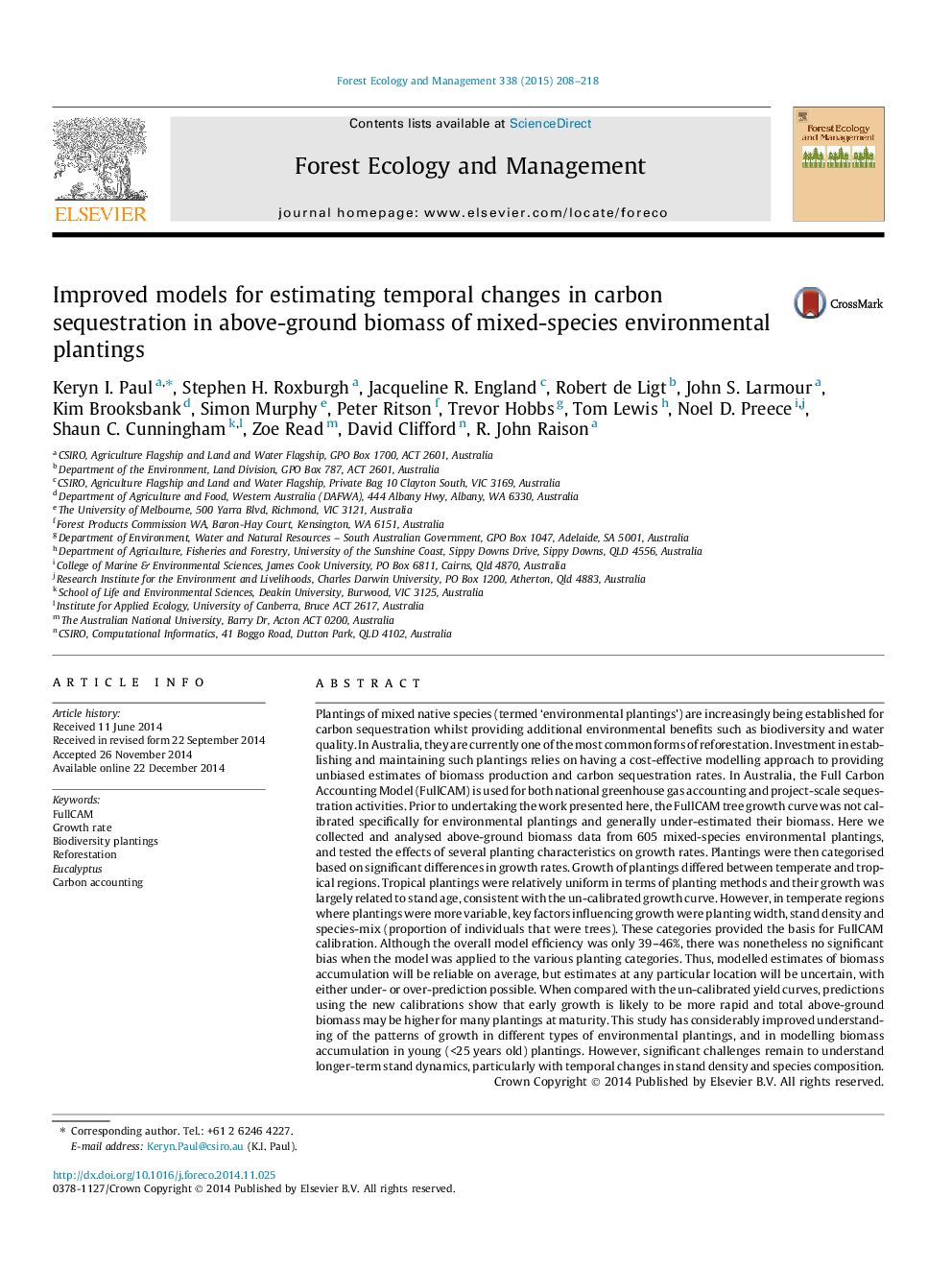| کد مقاله | کد نشریه | سال انتشار | مقاله انگلیسی | نسخه تمام متن |
|---|---|---|---|---|
| 86394 | 159183 | 2015 | 11 صفحه PDF | دانلود رایگان |
• Biomass data from environmental plantings were utilised to assess factors influencing growth.
• Key factors were climate, planting width, stand density and species-mix.
• Results informed carbon accounting models.
Plantings of mixed native species (termed ‘environmental plantings’) are increasingly being established for carbon sequestration whilst providing additional environmental benefits such as biodiversity and water quality. In Australia, they are currently one of the most common forms of reforestation. Investment in establishing and maintaining such plantings relies on having a cost-effective modelling approach to providing unbiased estimates of biomass production and carbon sequestration rates. In Australia, the Full Carbon Accounting Model (FullCAM) is used for both national greenhouse gas accounting and project-scale sequestration activities. Prior to undertaking the work presented here, the FullCAM tree growth curve was not calibrated specifically for environmental plantings and generally under-estimated their biomass. Here we collected and analysed above-ground biomass data from 605 mixed-species environmental plantings, and tested the effects of several planting characteristics on growth rates. Plantings were then categorised based on significant differences in growth rates. Growth of plantings differed between temperate and tropical regions. Tropical plantings were relatively uniform in terms of planting methods and their growth was largely related to stand age, consistent with the un-calibrated growth curve. However, in temperate regions where plantings were more variable, key factors influencing growth were planting width, stand density and species-mix (proportion of individuals that were trees). These categories provided the basis for FullCAM calibration. Although the overall model efficiency was only 39–46%, there was nonetheless no significant bias when the model was applied to the various planting categories. Thus, modelled estimates of biomass accumulation will be reliable on average, but estimates at any particular location will be uncertain, with either under- or over-prediction possible. When compared with the un-calibrated yield curves, predictions using the new calibrations show that early growth is likely to be more rapid and total above-ground biomass may be higher for many plantings at maturity. This study has considerably improved understanding of the patterns of growth in different types of environmental plantings, and in modelling biomass accumulation in young (<25 years old) plantings. However, significant challenges remain to understand longer-term stand dynamics, particularly with temporal changes in stand density and species composition.
Journal: Forest Ecology and Management - Volume 338, 15 February 2015, Pages 208–218
